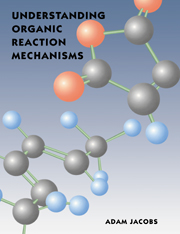Book contents
Summary
As organic chemists, we are primarily interested in the covalent bonds formed by the elements in the first row of the periodic table, in particular those of carbon. The study of organic chemistry is about the making and breaking of these bonds. However, before we consider the mechanisms by which these processes take place, it is worth spending a little time to look at the structures of organic molecules and the nature of the bonds which hold them together.
In this chapter we will look at the behaviour of electrons in atomic orbitals and the way these atomic orbitals can combine to form bonds. We will look at the movement of electrons in reactions, and how we can write this down so that we can see clearly what is happening. We will pay particular attention to those orbitals that take part directly in reactions, namely the frontier orbitals.
Chemical bonds
Atomic orbitals
Chemical bonds are formed when the atomic orbitals on one atom interact with those on another to form molecular orbitals. The electrons that each of the atoms brings to the bond are shared between them, occupying the resulting molecular orbital. Let us first look at the atomic orbitals that contribute to these bonds.
The behaviour of electrons in atoms is governed by the Schrödinger equation. Solving this equation gives an infinite number of wavefunctions, each of which is a mathematical description of the energy of the electron and the probability of finding it in a certain place, and is defined by a set of four quantum numbers.
- Type
- Chapter
- Information
- Understanding Organic Reaction Mechanisms , pp. 1 - 29Publisher: Cambridge University PressPrint publication year: 1997



